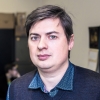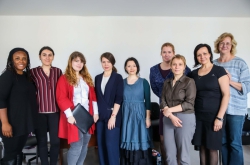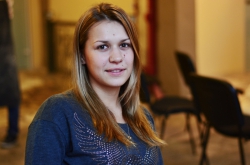ITMO University’s Department of Engineering and Computer Graphics is running classes at the children’s technopark in four key areas. High school students will be able to participate in courses on 3D modeling, where they will learn how to create various 3D objects. They can also participate in a course on computer animation and motion capture technology where they will be able to master character animation. There will also be courses on computer animation in virtual reality (development projects for VR headsets) and computer animation in augmented reality (developing applications with animated characters that can “come alive” with the help of Epson augmented reality glasses). These studies will help high school students become familiar with different professions and appropriately choose the university for their desired field, having already gained some experience working with the equipment and software.

Credit: vm.ru
“This is already the third year of Caliber’s operation; one of its purposes is to create more jobs for the city’s inhabitants, creating a space which will bring more people to the Ostankinsky district. Adding a new area for children was a logical development for the technopark which helps to develop new skills in preparation for university as well as get to know more about innovation. We hope that in the future these students might come back to work in a local organization at the technopark. However we can’t say that the children’s technopark is something we started from scratch. Since 2015, Caliber has been an active participant in such city-wide career guidance programs for school students as “Factories for kids”, “Professional impulse” and others. The technopark is regularly visited by schools in the Ostankinsky district, we run open classes with the participation of technopark residents, and we organize master classes with the company Animakord, creators of “Masha and the Bear”. It wasn’t easy to find an educational partner for the children’s technopark. ITMO University, being one of the most innovative universities in the country, became our partner, and its educational guidelines and teaching methods made it possible to adapt difficult material for the next generation of students. Moreover, partnering with a St. Petersburg university increases the reach of the children’s technopark: we are looking at options of having remote courses, short-term seminars for prospective university students and other formats”, said Sergey Sevostyanov, CEO of Caliber.
While preparing educational guidelines for the courses, it was decided to create a two-level system which allows for technopark participants to have more freedom in deciding what they will study: for those who want to study at Caliber children’s technopark, there is an opportunity to study the entire block of all four courses or to study one course in a specific area of interest (each course is about 36 academic hours).

Credit: realty.ria.ru
“ITMO University developed special educational guidelines for how to conduct classes at Caliber. These guidelines include detailed explanations of the content of the courses and their stages, which based on our many years of experience with high school students; there is a special Children’s Computer Center that runs within the Department of Engineering and Computer Graphics at ITMO University. Students at this center receive basic knowledge in the field of computer design and animation, programming, 3D modeling, web design, video editing and other similar areas. We also collaborate with the Anichkov palace of youth creativity, so we have a lot of experience in terms of working with children”, commented Artem Smolin, head of the Department of Engineering and Computer Graphics.
In addition, staff from the Department of Engineering and Computer Graphics have designed and modeled a special virtual character who will serve as a guide for students in all the courses. During the computer animation and motion capture course, the students will record their movements in a special costume and then apply them to the character. Moreover, the virtual person will be animated and exported into virtual and augmented reality headsets.

“When developing the educational guidelines, we took into account the fact that we are creating a program for high school students. First of all, the language of the material should be appropriate for school-aged children, which is difficult since 3D technology is full of complex terms, understood only by mathematicians and physicists, not school-aged children. Second of all, the tasks associated with the course need to be interesting for school students. We developed the course over several months. The main challenge was using new equipment, which those who developed the course didn’t have much experience with, thus, a lot of time was spent on installing, setting up and understanding the equipment. The guidelines, of course, have their unique features – there wouldn’t be a point in “reinventing the wheel”, after all. There are no other courses like this, since our students work with very modern technology. The studies will include such new technology and software as Autodesk 3DsMax, Autodesk Maya, Optitrack Prime 13, Motion Builder, Microsoft Kinect 2.0, iPi Motion Capture Studio Pro, Epson Moverio BT-300 and more” – explained Igor Klimov, senior lecturer in the Department of Engineering and Computer Graphics and co-director of the children’s computer center.

Virtual character created specially for Caliber
Besides developing educational guidelines and courses for the Caliber technopark, ITMO University is running a special training event for the technopark’s staff who will use the educational guidelines in practice.






